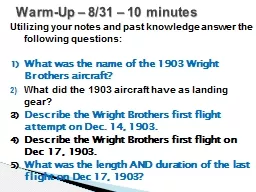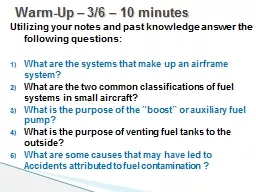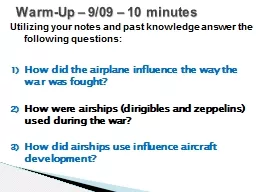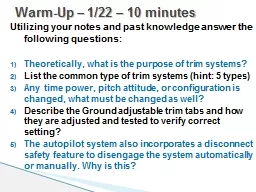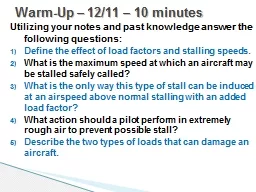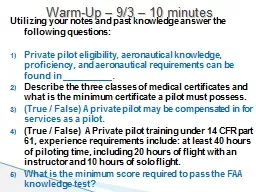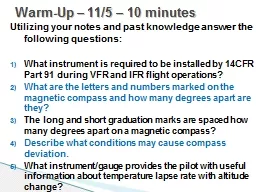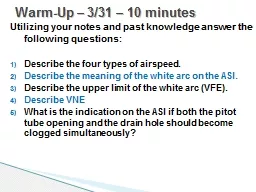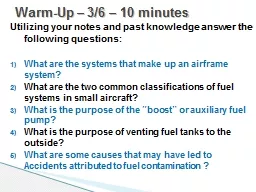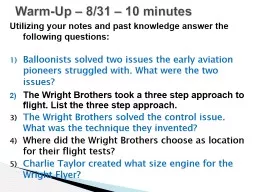PPT-Utilizing your notes and past knowledge answer the following questions:
Author : lois-ondreau | Published Date : 2018-10-12
Who flew the first flight on Dec 14 1903 Who flew the first flight on Dec 17 1903 What was the technique called that would roll the aircraft What was the three step
Presentation Embed Code
Download Presentation
Download Presentation The PPT/PDF document "Utilizing your notes and past knowledge ..." is the property of its rightful owner. Permission is granted to download and print the materials on this website for personal, non-commercial use only, and to display it on your personal computer provided you do not modify the materials and that you retain all copyright notices contained in the materials. By downloading content from our website, you accept the terms of this agreement.
Utilizing your notes and past knowledge answer the following questions:: Transcript
Download Rules Of Document
"Utilizing your notes and past knowledge answer the following questions:"The content belongs to its owner. You may download and print it for personal use, without modification, and keep all copyright notices. By downloading, you agree to these terms.
Related Documents

